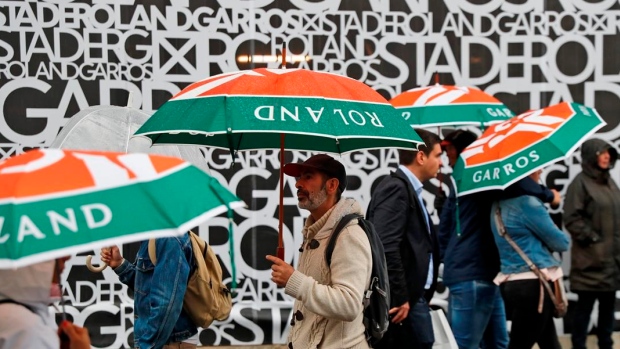May 27, 2020
French Open holding out hope some fans are able to attend
When — or if — the French Open is held later in 2020, though, it is possible there could be zero — or a limited number — of people allowed to attend the event, which broke its attendance record last year with 520,000.
The Canadian Press

PARIS — With the new $55 million (50 million euros) retractable roof shut atop a barren Court Philippe Chatrier — where the red clay has dimmed to an orange-brown, the court’s white lines have all but faded and there’s no net — the French Open’s main stadium was transformed into a far more imposing and modern-looking facility.
But without any fans yelling and clapping on Wednesday, it felt a bit like standing inside a silent and empty space ship. The site sits sans spectators this week: The clay-court Grand Slam tournament was postponed from now until September because of the coronavirus pandemic.
When — or if — the French Open is held later in 2020, though, it is possible there could be zero — or a limited number — of people allowed to attend the event, which broke its attendance record last year with 520,000.
Capping the number of fans allowed each day of the 15-day tournament might improve social distancing.
“Of course, we can have less people, so that the flow of people is made easier,” the French tennis federation’s general director, Jean-François Vilotte, told The Associated Press on Wednesday, when about 10 media members were allowed to tour Chatrier. “The options range from a very small reduction to the number of fans to various levels of reduction.”
Or no fans at all.
That, Vilotte said, would be a last resort.
“We are considering all the options. But we obviously prefer not to play behind closed doors. We want there to be fans there, fans who respect precautionary measures,” Vilotte said. “I have a hard time understanding why restaurants and shops are allowed to re-open, but we can’t do so at a big event like ours.”
The French federation would, of course, face significant revenue losses — tickets, hospitality, food and drink, merchandise — if no fans are allowed. As it is, those who bought tickets for the tournament’s original dates — last Sunday until June 7 — already were offered refunds.
Vilotte did not say what the cost of not having spectators would be.
“It’s too soon to answer this question,” he said.
One key question if spectators are allowed: How to gauge what rules should be applied at a 17-arena tournament?
“It’s not a football stadium. It’s not one unique location. There are many courts,” Vilotte said. “So how do we organize ourselves in terms of managing the flow?”
Even with a roof, night sessions are not planned at the French Open until 2021. If matches can go ahead in September, eight of the competition courts will have artificial lights to allow play until 9:30 p.m. local time — roughly as late as they would have ended if the tournament were held as scheduled in May and June.
Vilotte said the roof, which makes the French Open the last of the four Grand Slam tournaments to have at least one court protected from rain, is fully operational, other than some fine-tuning to lessen the noise when it closes.
The covering has 11 large sections, gleaming gray slabs that measure 360 feet (110 metres) long and weigh 660,000 pounds (330 tons) apiece.
It is part of a wider renovation that cost about $415 million (380 million euros) and included the destruction of Court No. 1, known as the “Bullring,” to make way for a grassy space.
About a dozen or so construction workers were visible around Chatrier and its surrounding, smaller courts Wednesday, including Court No. 6, which had its seating removed so the roof’s sections could be placed there before being installed.
Those seats need to be replaced. Other work that still needs to be completed, according to Vilotte: finishing hospitality suites and a new media centre.
___
More AP Tennis: https://www.apnews.com/apf-Tennis and https://twitter.com/AP_Sports
